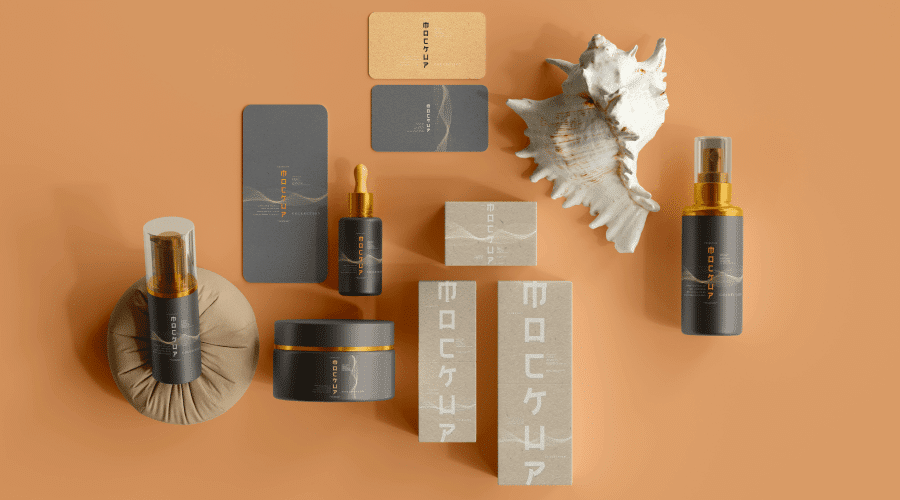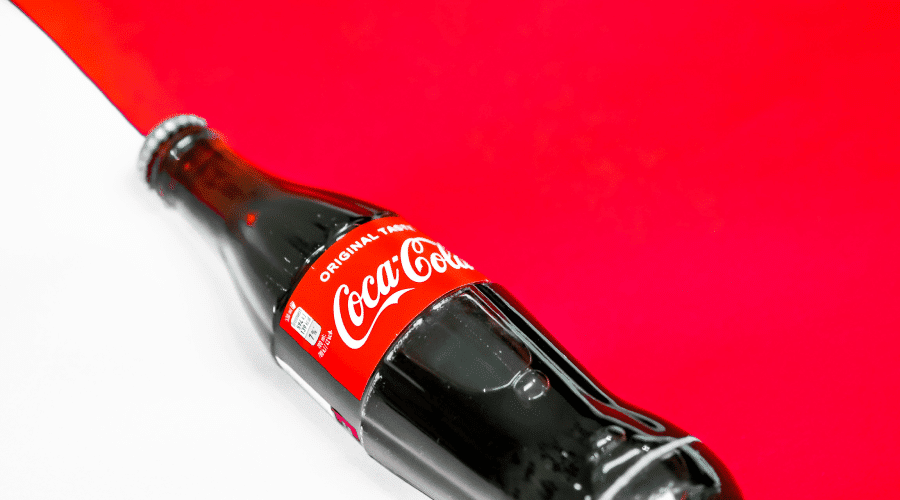What is branding, and why is it important for your brand?
What is branding?
Branding is the building of a brand. Many people mistakenly believe it’s just about placing a logo or business name in as many places as possible. However, it’s not that simple.
It involves a long-term process of developing and strengthening the visual identity of a brand to differentiate it from the competition. The significance of branding lies in specifying the basic principles, goals, values, and mission of the company. Moreover, it should be an integral part of every marketing strategy.

Branding of the brand
The role of brand branding is to create a brand that resonates with customers, enhancing its quality and strength. In the final decision-making, trust plays a crucial role, adding to the brand’s strength and quality.
In general, people prefer to buy from a trustworthy company with a good reputation. It’s not surprising the brand is one of the decisive criteria in purchasing a product. Therefore, it often overshadows the product’s quality itself.

Product branding
Product branding is the process of creating and building the identity of a product through various marketing and design elements. Basically, it is a way of how the product presents itself and how consumers perceive it. In other words, it is a key tool for creating awareness about the product and building its image. For example, influencer marketing is currently popular among companies.
The goal of product branding is to create a positive image associated with the product or service to motivate customers to choose it over competitive options.
Imagine this with a specific example. If given a choice between two identical products, but one is from a well-known brand, you would likely choose the ‘branded’ one because you perceive it as higher quality.

Personal branding
Personal branding involves the process of building and managing a unique identity through an individual. Many brands have built their brand on the face of a famous personality.
The goal is to create a unique and authentic image that feels more personal, allowing customers to identify with it. For this reason, the celebrity is deliberately selected to represent values, skills, and expertise in line with the brand.
Branding archetypes
Using branding archetypes helps brands define their personality and communicate with the target audience through emotional and symbolic elements. Archetypes create a stronger connection with customers, and help the brand stand out in a competitive environment. In fact, inspiration is drawn from mythical stories and their characters.
What are commonly used branding archetypes?
- Hero: Brands with this archetype are perceived as bold, heroic, and capable of overcoming challenges (e.g., Nike and Apple).
- Leader: Such brands are considered reliable, authoritative, and success-oriented (e.g., Mercedes-Benz or IBM).
- Free Spirit: Brands are seen as free, creative, and independent (e.g., Apple or Jeep).
- Everyday Person: These brands are accessible, authentic, and friendly (e.g., Coca-Cola or IKEA).
- Lover: Brands with this archetype focus on relationships and experiences (Godiva or Victoria’s Secret).
- Witness: They are perceived as objective and trustworthy (BBC or The New York Times).
Rebranding
Rebranding is the process of changing a brand’s identity to improve its perception by customers, refresh its image, adapt to new trends, or respond to the social changes. This strategy may involve changing the name, logo, visual identity, messaging, and other elements that influence how the brand is perceived.
However, rebranding is not just about visual changes. In fact, it involves deeper strategic thinking about how the brand communicates its values, message, and market position.

At Krásnô Studio, we also have experience with rebranding. Specifically, for the Martin Devečka brand, we implemented a complete design and visual identity change. The logo, symbolizing a seal as a guarantee of quality, received a new look. Additionally, we defined a unified color combination that characterizes the brand. And then, we redesigned all product packaging with a consistent visual theme.

Sound Branding
Sound branding focuses on creating distinctive and unique audio elements for brands to strengthen their identity. In general, sound is an important part of the overall branding strategy to build awareness, emotional connection, recognition, and differentiation from the competition.
We all know well-known brands which use sound branding, such as McDonald’s or Nokia.
How to build a brand?
To build a well-known brand, you need to know what is important to you and what you want to communicate in advance. In other words, there is no one-size-fits-all tactic that works for everyone. Each brand needs a combination of different elements that will be functional and effective.
Design manual
A document containing sets of rules and guidelines for maintaining consistency is called a design manual. You may also have heard of it as a brand book or brand style guide.
It provides a clear framework for creating and presenting not only visual elements in various media and communication materials, but also for maintaining a unified and professional appearance for the entity.

What branding components helping build a brand are most commonly defined in design manuals?
1. Logo creation
Designing a logo should reflect the foundations of the brand, representing its features, values, benefits, overall personality, and story.
2. Typography
Choosing the right font is crucial. It helps the brand appear unified and polished, creating order while allowing the expression of the brand’s personality.
3. Colors
The brain first recognizes color, then shapes, and finally content. Color selection is a powerful tool for generating interest and emotions, aligning with the value of your brand using insights from the psychology of individual colors.
4. Identifying the target audience
In any marketing strategy, it’s important to know the customer and define their personality. If you know how they think or act, you can adjust the entire strategy accordingly.
5. Tone of voice
Within the brand, you must always maintain a consistent tone when communicating with customers, including word choice, style, and emotional tone. Will you use formal or informal language? Do you want to appear formal or informal, serious or fun, rational or emotional?
6. Slogan creation
Do you hear the phrase “Just do it” and immediately associate it with the famous Nike brand? A memorable slogan (claim) will set you apart from the competition, making it easier for customers to remember you.
Which well-known brands are an inspiration in the world of branding?
Many well-known brands are considered exemplary in branding by professionals. They have a unique visual identity, an effective communication style, and the ability to build a strong connection with the target audience. Some examples include:
Apple
Apple has risen to the top in the technology industry through its consistency, minimalist design, and customer communication. Its success lies in a strong focus on innovation and technological development.
Apple aims to create products that customers need and want, rather than merely competing with other products. Additionally, they have cleverly built a comprehensive ecosystem where products and services complement each other. Customers who invest in one Apple product tend to stay within the ecosystem, purchasing additional products. The ‘bitten apple’ has become synonymous with quality and credibility for everyone.

Nike
The Nike brand stands among the most successful in the world, boasting a strong visual identity that emphasizes dynamism and sporting passion.
One of the most recognized logos, the Swoosh (a short, crescent-shaped checkmark), combined with the simple yet powerful slogan “Just Do It” creates an iconic visual and verbal element easily memorable and identifiable worldwide.
This brand strives to build an emotional story and connection with its customers. Their advertisements often highlight determination, vision, and the will to overcome obstacles, allowing customers to identify with the brand and consider it a part of their lifestyle.
The company also has long-term collaborations with sports stars and famous personalities, contributing to the brand’s prestige and authority. Sponsorship of well-known athletes like Michael Jordan and LeBron James reinforces Nike’s sporting character and values.
Nike is actively engaged in matters of diversity and inclusion. Their campaigns frequently emphasize diversity and fearlessly take a stance on social issues.

Coca-Cola
Among the most renowned brands worldwide is undoubtedly Coca-Cola. The distinctive package design, the red-and-white combination of the logo, and the shape of the bottle are strong visual elements that are immediately recognizable.
Coca-Cola has a long and rich history associated with positive emotions and societal events. This tradition contributes to the perception of the brand as an icon and a part of culture. Its appeal transcends cultural and language barriers, captivating various generations and demographic groups.
The brand has consistently been able to create successful and memorable marketing campaigns. For example, the Christmas advertisement featuring Santa Claus has become a part of popular culture.
Coca-Cola also continually introduces new variations and innovations within its product line (e.g., Coca-Cola Zero, Diet Coke), adapting to the changing preferences of customers.
The brand actively participates in charitable and social initiatives, such as efforts in environmental protection and support for education. It frequently engages in sponsorship agreements and partnerships, especially in the fields of sports and culture. These associations strengthen the brand’s image and increase its visibility.

How to measure branding success?
There are several ways to measure the success of branding, which is a critical step in evaluating effectiveness:
- Brand Awareness Assessment – Surveys or polls can provide information on how well your brand is recognized among consumers.
- Consumer Behavior – Measuring changes in customer behavior, such as increased loyalty, repeated purchases, and extended longevity of customer relationships, can incdicate branding success.
- Financial Indicators – Analyzing financial results (revenue, profitability, and return on investment (ROI)) can reveal the impact of branding efforts on the business.
- Online Analysis – Monitoring online activities, including social media, search engines, and websites, can provide insights into how the brand engages and interacts with its target audience.
- Competitive Analysis – Comparing the brand’s performance with competitors can provide perspective on how well you are doing compared to other market players.
- Customer Feedback – Tracking customer ratings, reviews, and comments can give you an overview of how the brand is perceived and its impact on consumers.
Top branding trends
Branding, as a dynamic field, evolves over time. In recent years, prominent elements have included:
- Minimalism (simple, clean, and elegant visual elements)
- Diversity and Inclusion (representation of various ethnic groups, genders, and cultures)
- Environmental Responsibility
- User-Generated Content (involving customers in content creation and building a community around the brand)
Previous topic
10 strategies to
prepare ...
Next topic
How to build
a unique ...
